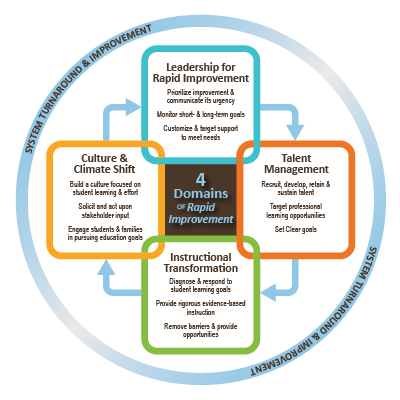CDE will be closed Wednesday, Nov. 27 through Friday, Nov. 29 for the Thanksgiving holiday.
You are here
Understanding Self

Understanding Self
Understanding Self is a key component to understanding the root causes of a range of inequities at the school and district levels – inequities that prevent members of the school community from feeling safe, like they belong or have value. This section of the toolkit supports you in achieving the following:
- Developing the capacity to notice your language, behaviors and thoughts and those of others
- Thinking and theorizing about what you notice, getting more information and developing explanations for what’s happening, why it’s happening and what needs to be done about it
- Acknowledging historical inequity for some groups and one’s place (as a beneficiary)

Self Assessment
Take the assessments to evaluate where your strengths and opportunities for improvement lie when it comes to reflecting on your lived experiences, mitigating your biases and understanding how both shape your leadership.
- Printable Understanding Self Self-Assessment (PDF)
- Fillable Understanding Self Self-Assessment (XLSX)
- Understanding Self Self-Assessment via Google Form
Likert Scale: Always (5), Frequently (4), Sometimes (3), Rarely (2), and Never (1)

Have you ever wondered:
- Why do some students and families feel isolated?
- Why do some students and families feel unsafe, while others feel safe and are not thriving?
- What, if anything, is preventing access to opportunities?
- How can you turn your school environment around for the better?
The questions are complex and can have a number of different answers. However, what we do know is that school and district leaders cannot make huge cultural shifts on their own. They must take place in collaboration with the school community (Four domains for rapid school improvement).
The input and feedback of those around us and our commitment to attending to it is what supports necessary change. A key component of being able to ask better questions and obtaining better answers is being able to recognize our subconscious biases.
And just like a car, using mirrors at various angles helps us understand where we are in relation to our students and families and thus, minimizes harm, enhances safety and allows for improved responsiveness when it comes to the learning needs of our students.

In this section, we will begin to explore some of the challenges with subconscious biases that can be addressed directly by you as school and district leaders.
- Challenge 1: Culture Informs Bias
- Challenge 2: Bias-Based Beliefs
- Intersectionality: A Navigational Mirror for Improved Responsiveness & Bridging Divides
![]()
Going Deeper


This page is maintained by the Federal Programs and Supports Unit.
Please help us keep it current by reporting any issues, inaccurate information, or suggestions for improvements.






Connect With Us




